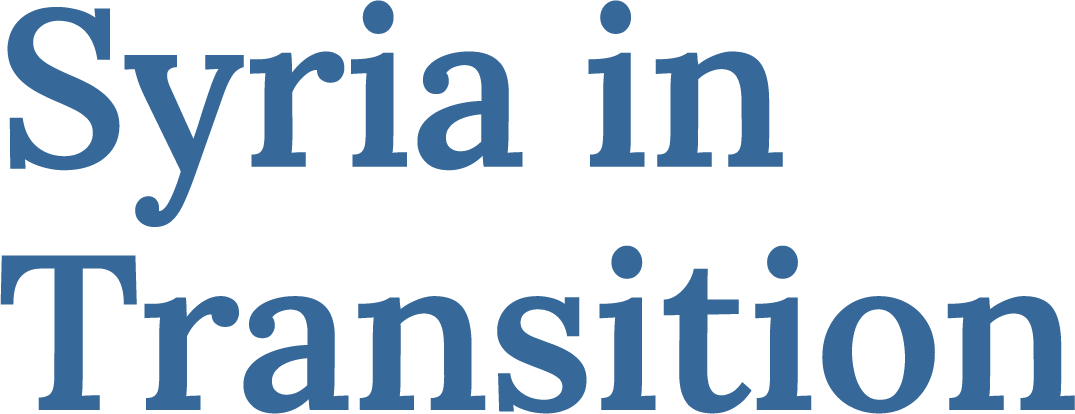In: Issue 26, July 2025
Proxy vote
In Syria’s troubled transition, a weak legislature may be better than none at all
When an estimated 5,000 Syrians head to polling booths on or around 20 August, it will mark a rare moment of political participation in post-Assad Syria. The poll, set to establish a new People’s Assembly through an indirect electoral system, will be conducted under a legal and administrative framework that has yet to be fully finalised. While no one is under the illusion that this parliament will be entirely ‘democratic’, its very existence is not without significance.
Majority rule
The process of forming a new parliament is unfolding at breakneck speed. A central electoral committee with 11 members – mostly non-HTS figures appointed by interim President Ahmad al-Sharaa – oversees the national process. In each of the 62 electoral districts, a two-person subcommittee manages the selection of electors. These electors are grouped into colleges numbering between 30 and 200, depending on the district’s population. Each district will send a number of MPs, again on the basis of population size. While the final number of parliamentary seats has yet to be confirmed, it is expected to range between 150 and 200. Of these, two-thirds will be decided through this method while the remaining one-third will be appointed by the president.
The electoral law underpinning this process has not yet been published, but the legal basis is found in the Constitutional Declaration of 13 March. Crucially, the new law is expected to clarify contentious issues such as voting thresholds: whether a simple majority suffices, or if a second round will be needed if no candidate secures an absolute majority. The competition for seats is set to be stiff as many Syrians (particularly Sunni Arabs) have shown eagerness to participate in a process they consider to be integral to a state-building effort.
Syria’s fractured demography casts a long shadow over the proceedings. Seat distribution is based on 2010 population figures – extrapolated from the last full census in 2004 – with seats allocated proportionally: a governorate with 20 per cent of Syria’s estimated 21 million citizens will receive 20 per cent of the seats. This method has stirred resentment in regions like Tartus and Latakia, where sectarian sensitivities make elections particularly fraught. Sunni candidates, viewed as more sympathetic to revolutionary ideals, could dominate electoral colleges in such areas, a scenario that has unsettled Alawite communities.
Eligibility criteria
The pool of eligible candidates is restricted to those who were Syrian citizens before May 2011, are registered in their district, and have no criminal record. They must also not be serving in the military or security forces, nor hold high government office. Importantly, they cannot be supporters of the old regime – an ambiguous but telling exclusion. Candidates will be required to submit CVs and political programmes, and there is even talk of public debates preceding the vote. Crucially, they must also be members of the electoral college for their district.
The target composition of parliament reflects an effort to prioritise technocracy over traditional leadership: 70 per cent university graduates and 30 per cent ‘notables’ with secondary school qualifications. Sharaa’s preference for a “slim” parliament of “qualified” members has raised the suggestion that a second chamber may be brought into existence: a consultative majlis ay’an (council of notables) for tribal leaders and other distinguished persons.
20 per cent of seats will be reserved for women and 2–3 per cent for people with disabilities. The president’s third of the appointments – to correct imbalances in gender or minority representation – will be announced after the elections.
Power deficit
For all its procedural detail, however, the process has flaws. Safeguards do exist like appeals committees presided over by judges, but the system is still vulnerable to manipulation, albeit requiring a concerted and carefully orchestrated effort. Some regions – particularly Suwayda and the northeast – remain inaccessible to the central electoral committee. In these cases, electoral colleges will be convened in Damascus, nominally composed of representatives from the regions. The Autonomous Administration of North and East Syria (AANES) has so far refused to cooperate with the electoral committee.
In any event, as the Constitutional Declaration makes clear, the People’s Assembly is unlikely to enjoy meaningful oversight powers. It may draft legislation, and even begin work on a permanent constitution, but its ability to scrutinise the executive – through questioning, investigation, or impeachment – is likely to fall short of international standards. Critics argue that this risks reducing the new parliament to a rubber stamp: a democratic fig leaf for a transitional government with authoritarian tendencies.
However, even a parliament with limited power could serve a purpose. In a country where politics has long been synonymous with repression, the establishment of an institutional forum – however constrained – carries some weight. It will offer a space for public debate as members of parliament will enjoy immunity from prosecution, granting them the freedom to voice concerns that many ordinary Syrians may be too fearful to express.
More importantly, it could serve as a vital stepping stone. Structural conditions – internal division, proliferation of arms, external interference, and a transitional government wary of genuine dissent – make a directly-elected and empowered parliament with real oversight powers all but impossible for now. If the new People’s Assembly becomes a site of visible manipulation or co-option, that will quickly become evident. But it may evolve into something more meaningful.
